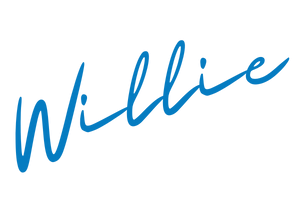Let’s hit the ground running on this – because that’s the way I usually operate; start explosive and end with a graceful land.
I’m going to start with what people do when they find something that they want to do/achieve/or work on – create a weight list. No this isn’t a jab at how many burgers you eat on a regular basis, a weight list is what career focused people do on a daily basis (actively or passively) to make core decisions in their life.
So let’s do this exercise focused on you, right away so we can start getting results. Write down three aspects of yourself that you would take to a job:
It doesn’t matter if you exaggerate a little, just throw it on the page)
1. contiguously Energetic
2. Problem Solving attitude
3. Quick thinking genius
Now I know these could seem unrealistic and hyperbolic, but this is critical in pumping you up to get you to where you want to be.
So these are your base traits that you can bring to your role, now jot down three killer skills you have:
1. Supporting people with mental health
2. Identifying gaps in simple or complex situations
3. Managing money with people on a regular basis
These skills are to give you a rudder to your boat, allowing you to steer yourself in the right direction to choosing where you want to be.
So you have a set of traits and a set of skills, now what? Now you pair them up, one to one; so for example:
1. Contagiously Energetic whilst identifying gaps in simple or complex situations.
2. Quick thinking genius on identifying gaps in simple or complex situations.
3. Problem solving attitude around managing money with people on a regular basis.
So we have these buzz lines that do what? They give you a set of sentences to direct your efforts. Easy right?! So now… the hard part – tactical research.
Use that sentence, those buzz words, and pick the active words “managing money” and type that in Google with a plus symbol and jobs, For example:
1. Managing money + jobs + (Your Location)
2. Identifying Gaps + jobs + (Your Location)
3. Energetic attitude + jobs + (Your Location)
This is slightly hit and miss but gives you an idea of what’s our there. Collect the list of all your outcomes for each of these searches and (1) find if there is a trend in your skill set and (2) tag those jobs that you would be interested doing.
Your next steps are crucial, because this is essentially where you do some advanced research – LinkedIn. Go on LinkedIn, select the search bar, and search for those jobs and look at those professionals online accounts; they are your two methods of attacks to put your chosen plans into practice. Look at these components:
1. Language
2. Experience
3. Page design and photo quality
4. Qualifications
For this information you look at their job history and identify the jobs that have put them where they are today. Pick a number of people, grab their old roles, and draw conclusions from their experience and certifications – then measure yourself.
So what do we have right now?
1. Who you are.
2. What your skills are.
3. A research process to collect data.
Your next process is create a strategy. Use a mind mapping tool – FreeMind lets you brainstorm from the information you have gathered and draw a pathway.
Use a brainstorming tool, and categories what you know:
1. Who you are and your skills (left)
2. What profession based on point #1 and the research you have, is what you could feel you could / work towards doing. (Middle)
3. How to get there.(Right)
Point #3 is harder, you need to look at your circumstance and weigh up what you need to do, based on the criteria of your online brethren (LinkedIn), and see if you can fit in those qualifications into your life. Do you have the funds, capacity, and gusto to do it? The last point, is a yes, it’s why you’re reading this, you just need to identify the first two.
At this point, you have a choice;
1. Start booking time to talk to people online about their roles – approach them, talk to them, discuss with them on what it takes. You’ll be surprised how open people are.
2. Take this content and strap it into your resume; use it to bolster your resume and make you stand out.
3. Make moves on planning how you will achieve the qualifications you need for the role – this doesn’t have to be immediate, just a plan, an idea of what you could/would need to outlay to get it done.
4. Use this content you created as the basis to plot your next steps.
To finish up, we have planned out who you are, where you could be, and what it takes for you to get there by comparison; the next steps are all yours, but you have the tools, and the capacity to do it – get out there and do it!
https://youtu.be/Us1iJk3_zF0

